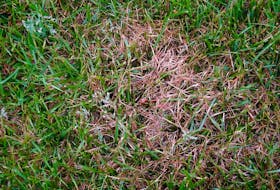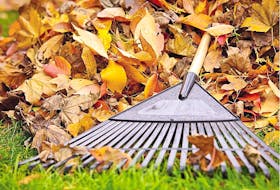Replacing deteriorating windowsills
Q: What’s the best way to replace the deteriorating wooden windowsills on my century home?
A: Windowsills are almost always part of the entire window unit and not something that can be replaced separate from the window. If there’s rot present (not unusual), then you’ve got two options. One is to have the windows replaced. This is the most expensive option (good windows in the size you need can easily cost $1,000 each), but the results will be excellent if you choose windows wisely and have a certified installer. Here’s an article I wrote that will help you choose well — baileylineroad.com/how-to-choose-windows.
Another option is to rejuvenate your sills by removing the rot, consolidating the punky wood, then filling the cavities with an epoxy-based filler made for the job. A Canadian product called Rhino Wood Repair is the best I’ve seen for this. If you’re handy, you could even do a good job yourself. If you do decide to try filling, don’t use autobody filler, like some people do. It won’t last because the wood around this filler will continue to rot. The Rhino process includes a step that kills rot organisms first, before filling.
Cottage heating in the off season
Q: Can I safely leave the heat turned off in my cottage over winter? The floor is hardwood and I’m concerned about warping. I’m retired and don’t want to spend the $200 a month it costs to keep minimal heat on.
A: In my experience, warping of floors is a function of moisture movement, not temperature change. If the floor has been stable for a while, I don’t think you’ll have any trouble leaving the heat off. Incrementally reduce the temperature, keeping your eye on the floor. I doubt you’ll have any issues, but it’s good to be sure. I live in cottage country and everyone I know leaves the heat off all winter every winter in their cabins with no issues.
Unvented attic space
Q: Is it wise to remove attic insulation and replace it with spray foam on the underside of the roof sheathing? My brother recently moved from a cold climate to Florida and had all the attic batt insulation taken out. Vents were plugged and spray foam applied to the underside of the roof sheathing. This reduced attic temps to within 5ºC of his house and lowered the air conditioning load. Is this a good strategy in both cold and hot climates?
A: I’m not crazy about this approach for a couple of reasons. Considering the trouble of removing and disposing of the old and perfectly good insulation, and the expense of applying spray foam, the pay-off doesn’t seem to be there. Yes, an attic will be cooler this way, and this will reduce air conditioning costs. But for most situations you can accomplish the same thing with a small electric attic fan. They’re thermostatically controlled and do a great job moving hot attic air outside. With a fully sealed attic like your brother has, issues with stagnant air can occur. Attic fans, by contrast, in a ventilated attic ensure there’s never any stale air, dampness or condensation building up.
On a related note, traditional organic asphalt shingles will curl and fail quickly over an unvented roof. This is no problem with fibreglass shingles in this situation, but traditional organic asphalt simply can’t take the heat.
All this said, I’m a big fan of under-roof insulation, but only when it’s part of a larger plan to create a livable attic. So many homes could have so much more living space if the area under a roof was finished and insulated. I don’t see the value in insulating the underside of a roof if the attic remains unlivable.








